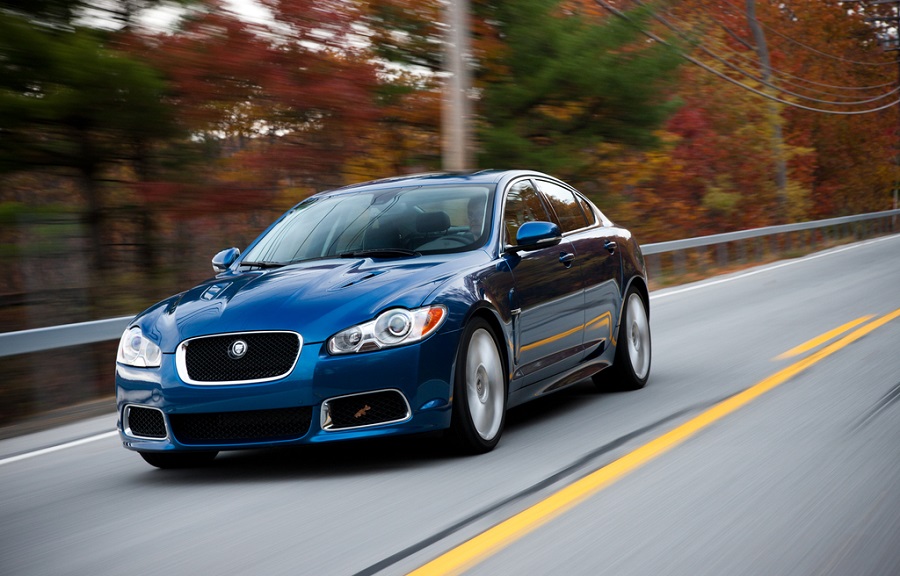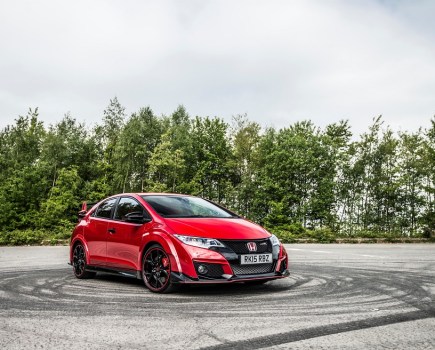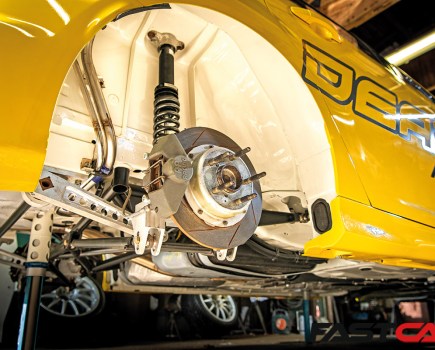You can bag this Great British super saloon for less than 20k these days. Interested? Have a read of our Jaguar XFR buying guide.
The automotive landscape in the late noughties was awash with brash, big power Germanic super-saloons that wore their performance intentions very visibly in their exterior aesthetic. So when it came time for Britain to throw its bowler-hat into the ring in the form of a ballistically-fast Jaguar, rather than follow suit, it took a deliberately more reserved approach, one that was much more befitting of a true English gent. Fast-forward about a decade, and the Jaguar XFR is now a very tempting used car indeed.
The first toe in these crowded waters was the SV8, which paired the S-Type R’s 4.2-litre 400bhp supercharged V8 with the refined XF chassis. Effortlessly fast, but lacking the dynamics to rival the best from continental Europe, it was with the XFR’s arrival in 2009 that the real contender made its presence felt. The old V8 was out and a new 5.0-litre V8 equipped with an Eaton Twin Vortex blower was in, this time packing 510bhp. Jag linked this added grunt to a chassis complete with stiffer springs, active dampers and a clever electronic rear differential that ramped up the XFR’s athleticism to new heights.
But even with such steroidal muscle under the surface, the big Jag’s exterior remained as classy as a Saville Row suit. Only a modestly altered front bumper, new 20in alloys, a quartet of tailpipes and subtle ‘R’ and ‘Supercharged’ badging marked out the range-topping performance model from its diesel-sipping siblings. Oh, and the sound of its thunderous V8 of course!
Performance in practice
But as restrained as it looked, its performance was anything but, with the 0-60mph dash taking just 4.7-seconds and a top speed electronically-limited to 155mph. On the road it wasn’t just the straight line speed that impressed either, with the sportier suspension providing thrills in the twisties while still retaining the composure and refinement you’d expect whilst ensconced in the big cat’s luxurious wood and leather-clad cabin. Of course, all this grunt came at a price, and the low-20s mpg means visits to the filling station for top-grade 98-RON juice is an all too common occurrence.
Unfortunately, Jaguar’s sledgehammer stealth didn’t draw the masses away from their gaudy Audis and BMWs as well as intended, so shortly after the 2011 facelift, a Speed Pack was added in 2013, which raised the limiter to 174mph and added a more aggressive front splitter and rear wing. An even more aggro XFR-S upped the ante soon after with a 0-60mph time of 4.4 seconds and a 186mph top end, and was even available as a load-lugging shooting brake. The XFR and its increasingly aero-clad siblings sat atop of Jaguar’s super saloon line up until its retirement in 2015, heralding the last of the V8-powered XFs.
Jaguar XFR Buying Guide
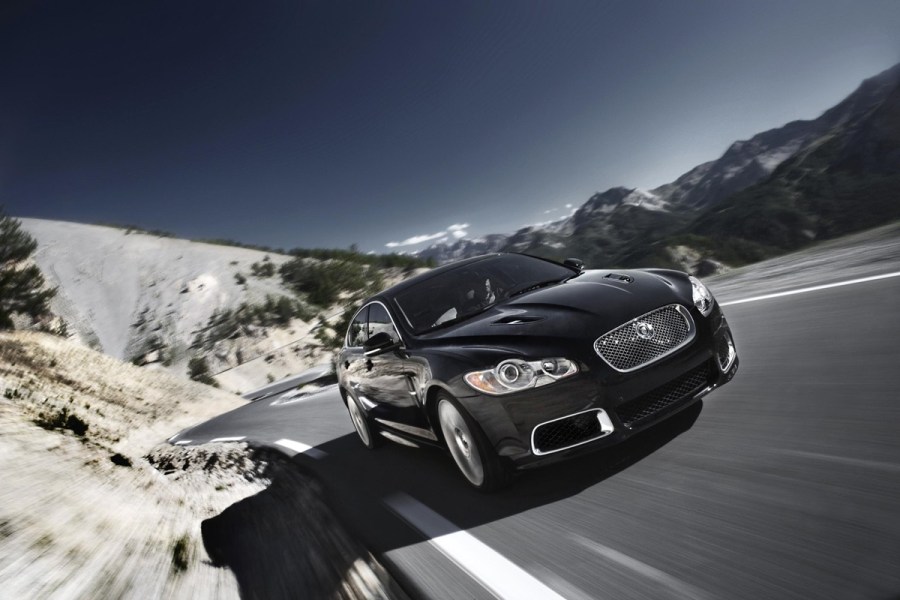
Most common problems
- E-differential problems – The XFRs trick electronic rear diff makes the big Jaguar into a sideways sliding special if you’ve got the skills but can come with some problems that can throw fault codes on the dash. Usually these can be traced back to a faulty diff-locking motor.
- Worn suspension components – Being a big, heavy and powerful machine, the XFR is understandably prone to suspension wear, especially on items such as rubber bushes and lower suspension arms. Check for clonking and knocks on the test drive and that there is no slop or juddering to the steering.
- Fuel leak – Some cars, particularly those from 2010 and 2011, develop fuel leaks from the tank’s outlet pipe. This can be exacerbated by rust forming on the connecting edge of the pipe, which meant Jaguar had to recall some cars. Ensure this connection is checked over before buying.
- Timing chain – Although generally extremely robust, there is a common issue of the V8’s timing chain jumping, due to some of the materials wearing excessively. Telltale signs are a rattle on cold starts or a warning about restricted performance on the dashboard.
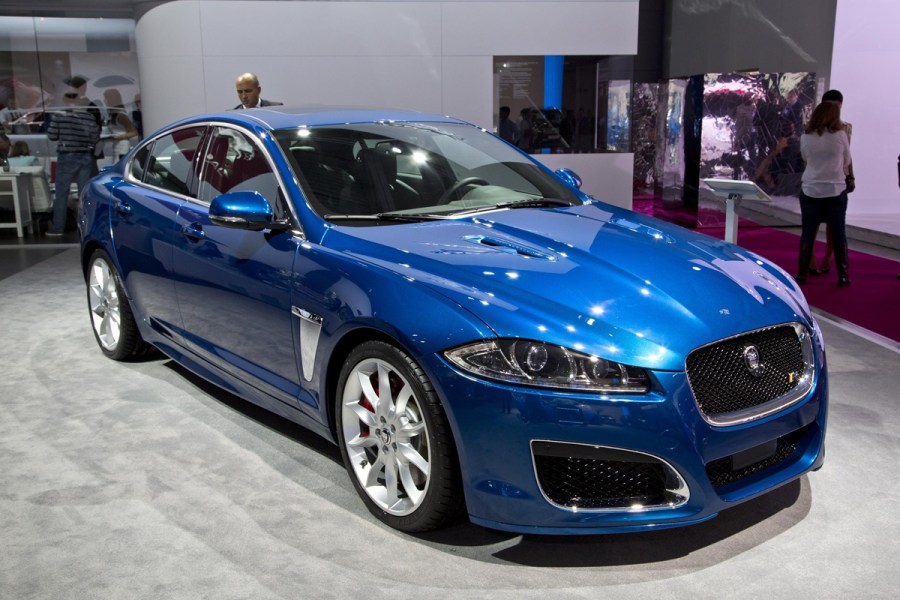
Pros
- Outstanding soundtrack from the largely bulletproof and ballistic supercharged V8 engine
- Excellent ride quality combined with thrilling chassis dynamics when the mood takes you
- Subtle exterior styling means you’ll fly under the radar in understated style
Cons
- Hearing that V8 sing comes at the cost of a rapidly descending fuel gauge, even at its most economical you are unlikely to breach 30mpg, with heavy use dropping into the mid-teens
- Repair costs are not cheap, but then neither are its German rivals. Road tax is also just shy of £700 a year
- Bland looks barely distinguished from the base models are not to everyone’s taste in a super saloon
Model timeline
- 2009 – Launch of Jaguar XFR with 5.0-litre supercharged V8 engine
- 2011 – XFR facelift model introduced with sleeker headlights and revised interior
- 2012 – XFR Sportbrake estate model released
- 2013 – Speed Pack upgrade introduced along with more aggressive XFR-S model with 542bhp and 186mph top speed
- 2015 – Production of the V8 engined XFR’s ended
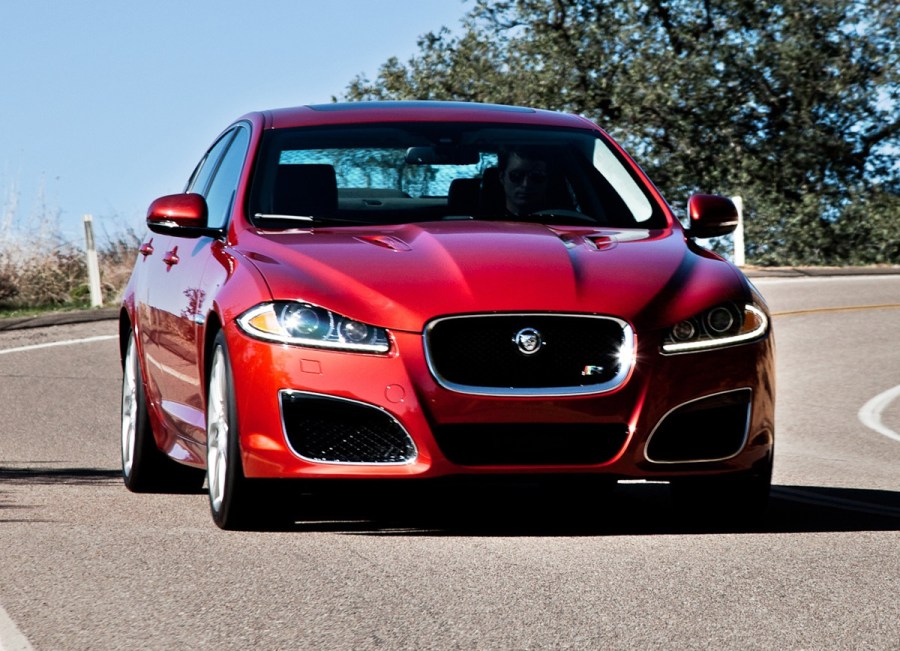
Engine
The XFR’s 5.0-litre supercharged V8 is one of the gems of the engine world. Packing 510bhp it provides enough grunt to shift the luxuriously-appointed saloon from a standstill to 60mph in just 4.7 seconds and on to an electronically-limited 155mph in base trim. The Speed Pack version raises the limiter to 174mph while the 542bhp version in the XFR-S model takes things up another notch, reducing the 0-60mph sprint to 4.4 seconds and increasing top speed to 186mph.
Issues to watch out for
Providing a thorough history file is present showing regular servicing, the engine should remain fairly bullet-proof with few major issues. Oil and filter changes are quoted as being required every 15,000 miles, although specialists would advise nearer 10,000 miles or annually. A big service is needed at 105,000 miles, and includes fresh spark plugs as well as a new belt for the Eaton Twin Vortex supercharger. Expect to pay around $600 / £550 at an independent specialist and considerably more at a Jaguar main dealer. If the 510bhp starts to feel a little mundane then tuning packages including a smaller supercharger pulley, uprated air filters and a remap are available to add an extra 80-100bhp and cost around $1600 / £1500. Also, if you want a more aggressive soundtrack, performance exhaust options are available to unleash a more meaty bark.
A common issue that can arise however is a faulty water pump. These are known to fail after as few as 20,000 miles. This is caused by coolant corroding the water pump bearing, and it can lead to excessive wear of other components. Check for coolant leaks around the water pump and/or a warning message on the dash about a low coolant level, although this could also be down to failed coolant pipes, so heck carefully for any cracks in the brittle plastic pipework.
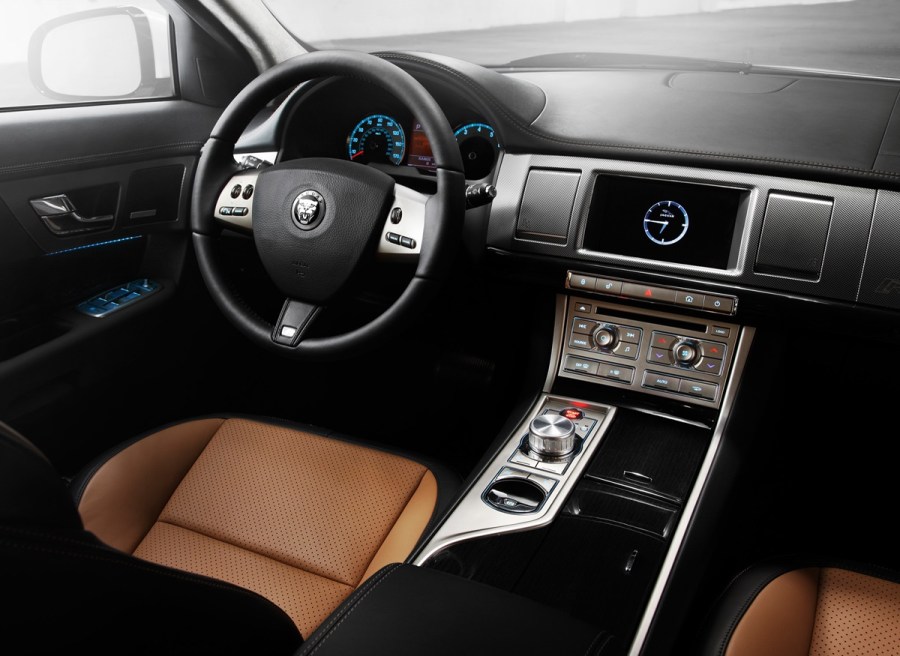
Transmission
The XFR’s six-speed ZF automatic transmission offers seamless shifting with lightning speed both in full auto mode or when using the steering wheel mounted paddles. Although it’s supposed to be a sealed for life unit, specialists recommend that the transmission fluid is changed ever 60,000 miles to ensure the slick shifting nature remains and to avoid any undue deterioration in its life expectancy. Budget around $250 / £200 for this service at a specialist including fluids.
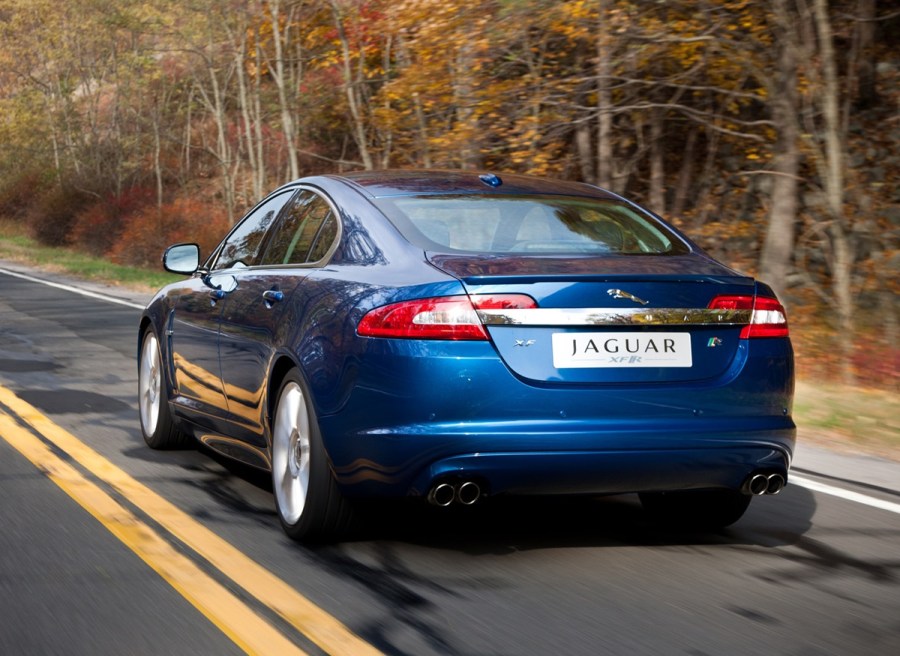
Chassis
Suspension
The XF’s suspension design was developed from the previous S-Type, meaning it retains coil-sprung double wishbones all round with an anti-roll bar at each end. The springs have been stiffened in the XFR along with active dampers and an electronically-controlled locking rear differential known as Active Differential Control. Although it works superbly well, it has been known to develop oil leaks, and can throw up fault codes too, mainly from a failing electric motor used to rotate a cam gear that activate the limited slip clutches. These motors cost around $650 / £550 plus fitting, so check for lights on the dash and any fluid leaks from the rear of the car.
Brakes
A big powerful car needs big powerful brakes to haul it up from speed and the XFR is no exception. Up front, 380mm ventilated discs take care of stopping duties, while the rear has 326mm discs. In normal use, front brake pads can last around 30,000 miles and rears for half that as they operate the traction control, but regular hard breaking will decrease their life drastically. New front pads are around $150 / £120 and rears $90 / £60 from a specialist plus fitting. Jaguar issued a recall in 2014 for the XFR as the right-hand rear brake pipe could foul on a bracket, leading to a loss of brake fluid. Check the service record to ensure this work has been carried out.
Wheels
Packing a full-on 20 inches at each corner, the XFR’s alloy wheels require some serious rubber too. Original equipment Dunlop Sportmaxx tires last well but most owners seem to prefer the wet weather grip of Pirellis, even at the expense of them wearing more quickly. Budget on around £340 for a pair of front tires and £400 for the slightly wider rears. Check tires for nicks and bulges that could indicate damage and uneven wear as this will likely require the suspension geometry needed to be re-aligned. You might also find a fault with the tire pressure monitoring system, but in most cases it’s the valve that needs replacing as the sensor’s battery runs flat after about five years.
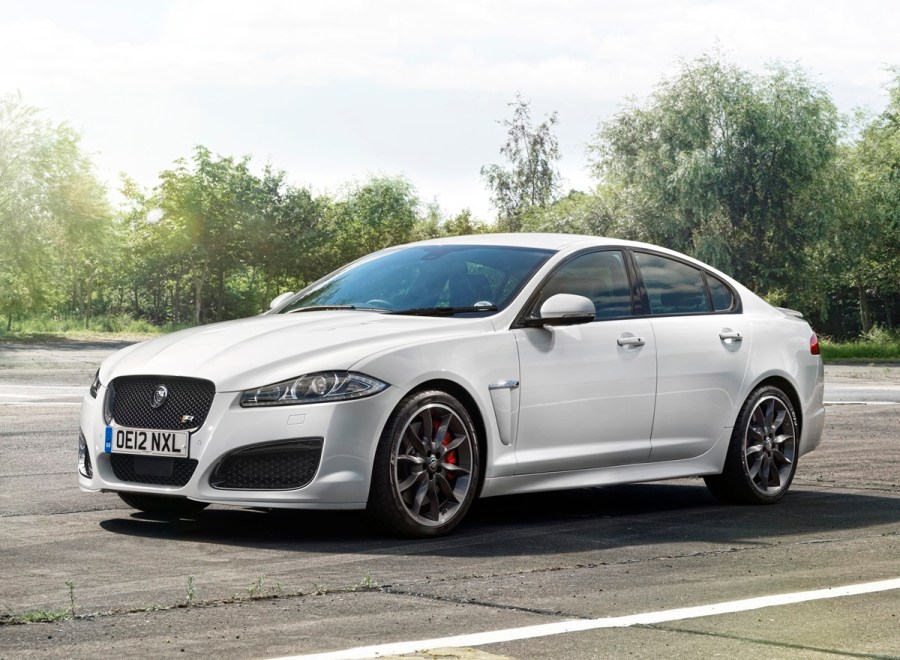
Jaguar XFR Speed Pack
Aero
Unlike the base model XFR, the Speed Pack model and the range-topping XFR-S both added extra body addenda to the big Jag’s sleek styling. But it wasn’t all just for show, as the deeper front splitter, side skirts and large high-level rear wing also aided the car’s aerodynamics with Jaguar claiming the kit added up to provide a 68 per cent reduction in lift. Impressive stuff!

The top of the range Jaguar XFR-S
Prices
As ever, factors such as model year, mileage and condition play a role in the sort of price you can expect to pay for and XFR. And, naturally, an XFR-S will demand more money than a ‘regular’ XFR. In the US, you’re looking at a price spectrum ranging between roughly $14,500 up to the lofty highs of $60,000 for an immaculate XFR-S. Over in the UK, it’s a bit different. £11,000 is the rough starting price (we’d avoid any offered for less than ten grand), but fees can climb as high as £40,000 for a really tidy XFR-S.
Words by Dan Sherwood

